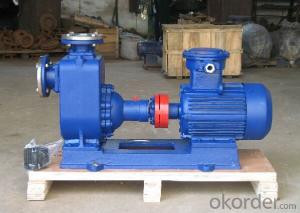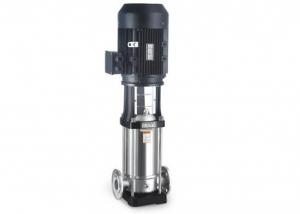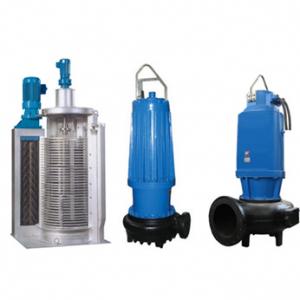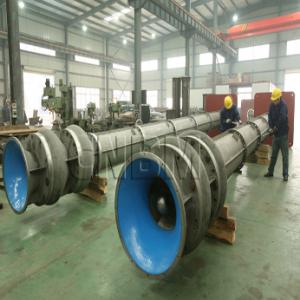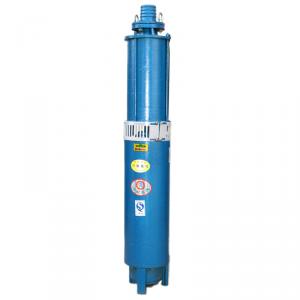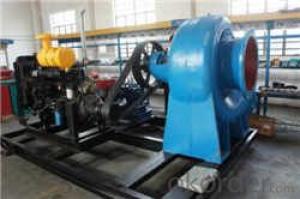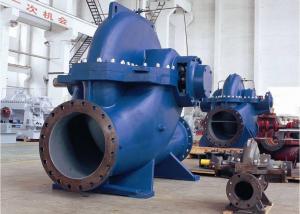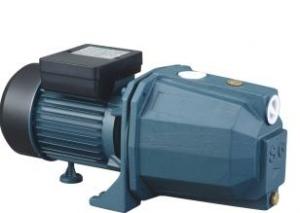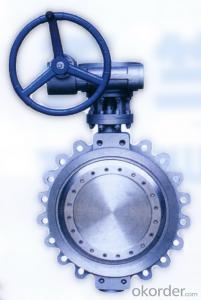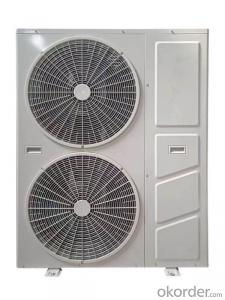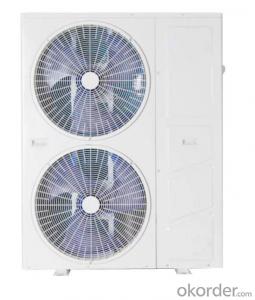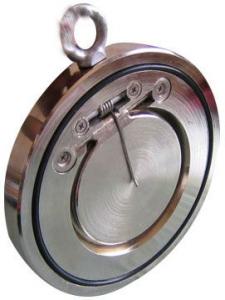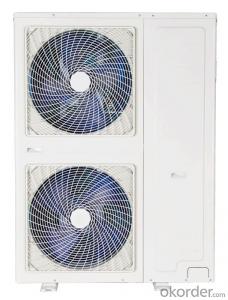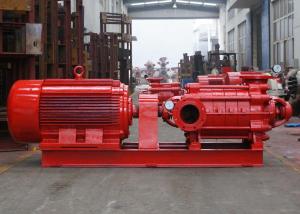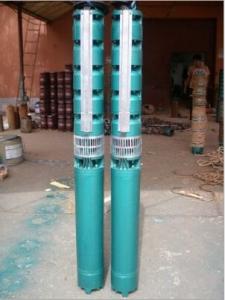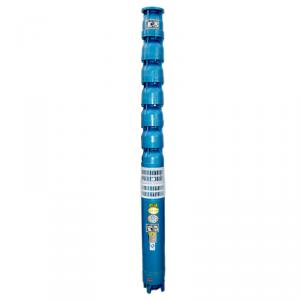Electric Driven Self Priming Water Pump
- Loading Port:
- Shanghai
- Payment Terms:
- TT OR LC
- Min Order Qty:
- 1 set
- Supply Capability:
- 1000 set/month
OKorder Service Pledge
OKorder Financial Service
You Might Also Like
Electric Driven Horizontal Self Priming Pump
1.Structure of Electric Driven Horizontal Self Priming Pump Description
The CYZ-A Series self priming fuel oil pump is the new pump developed based on international technical information. The pump has the ability of simple structure, easy operation, smooth running, easy maintenance, high efficiency, long life, strong ability of self-absorption. No bottom valve needed to install in the pipeline, just to ensure that pump body filled with priming oil before work. It is suitable for the oil tanker or water transportation on the ship, it can also be used as stripping pumps.If using corrosion-resistant mechanical seals and stainless steel material, can also be used in chemical, pharmaceutical, brewing, electroplating, printing and dyeing, paper making, power and mining industry, etc.
2.Main Features of Electric Driven Horizontal Self Priming Pump
• Strong self-priming capacity
• convenient operation
•stable operation
•easy maintenance
•high efficiency
•long service life
3.Electric Driven Horizontal Self Priming Pump Images

4.Diesel Driven Self Priming Sewage Water Pump Specification
Material |
Cast Iron, ADI, CD4MCU, 316 SS, Alloy 20, C276. |
Diesel Driving |
Water cooled or air cooled |
Method of Connection | Self-priming pumps are available as basic units or may be flex-coupled, V-belt driven or engine mounted. |
Inlet/Outlet |
2''(50mm), 3''(75mm), 4''(100mm), 6''(150mm), 8''(200mm), 10''(250mm), 12''(300mm) |
Impeller Diameter |
158.74mm-457.2mm |
Rotary Speed |
550RPM-2150 RPM |
Flow Rates |
8m3/h-1275m3/h |
Head |
6m-63m |
Horsepower |
1HP-125HP |
Solid Passing |
20.63mm-76.2mm |
5.FAQ
①What is the lead time for samples?
7-10days
②How to guarantee the quality of the products?
We have established the international advanced quality management system,every link from raw material to final product we have strict quality test;We resolutely put an end to unqualified products flowing into the market. At the same time, we will provide necessary follow-up service assurance. Normally, We have 1 year warranty.
③How long can we receive the product after purchase?
In the purchase of product within three working days, We will arrange the factory delivery as soon as possible. It related to the state and detailed requirement of customers.
- Q:hiI have very low pressure only on the hot water in my kitchen sink. Cold water is fine. Can anyone recommend a water pump/power shower i can use for boosting my hot water in the kitchen sink tap?Ive already tested the faucet by swapping the water supplies.thanks
- To determine if it's the water system or the faucet, turn off the hot water supply valve and remove the supply line from the faucet (or remove it from the spigot on the wall and use a spare supply line). Turn the water on full and direct the water into a bucket to determine the flowrate (like you did earlier from the tap). Now repeat with the cold spigot. Did you get the same amount of water over the same amount of time (same flowrate)? If so, there's something wrong with the faucet, and it needs to be repaired or replaced. If not, you likely have some restriction in your hot water system, which could be the supply valve itself. Or it could be something anywhere from the water heater to that spigot. Next you would have to do something similar (measuring the flowrate) at various faucets in your house (including a bath/shower) to see if it's a house-wide problem or just local to that kitchen faucet. One thing that does happen in hot water systems is that debris from scale buildup in the water heater can be flushed out into the pipes and create restrictions in the valves that could affect flowrate.
- Q:I have built my own spray rig to water some stock and tanks and a garden. It is a 330 gallon tank and has a spout at the bottom that i am going to connect a multi purpose pump to. My question is what size pump would i need? I have been looking at Atwoods and Tractor Supply and have seen some 2.1 GPM and a 5 GPM pumps i just don't know which would best suit me. i am planning on having the tank on the trailor and running water hose to a sprinkler or two. I would like to know how man sprinklers are possible on this type of system and still keep good pressure. Thanks for any answers.
- Like the last person, what you've looked at won't do much. Just think of a 5 gal bucket and how fast do you want to fill it up. Also you want pressure behind this water if you want to water with it, so look at the psi on a pump as well as the GMP to determine what will work best for you. I'd say 40psi should be enough pressure to run hoses and sprinklers and remember that the smaller the hose at the end gives the highest pressures. Hope this helps you out some. I'll admit, I'm thinking of this as knowledge of water pressures more than GMP, but I think I've explained something good about your question. Good LUCK
- Q:A water pump that consume 2kW of electric power when operating is claimedto take in water from a lake and pump it to a pool whose free surface is 30 m above the free surface of the lake at a rate of 50 L/s. Determine if this claim is reasonable.You have to show the minimum power required is 14.7 kWand i can't get it.
- A liter of water mas a mass of 1Kg. How much work must be done to raise 50 Kg of water through a height of 30 m? You can say: Work done (W) = potential energy gained (mgh), Or you can say that Work done is the weight force (mg) * the distance moved against the force (h) Either way, W = m * g * h where m is the mass; g is the acceleration due to gravity {9.8 m/s?}; h is the height W = 50 * 9.8 * 30 = 14700 J If you need to do that amount of work in one second, that's a rate of working of 14700 J/s A joule/second is a watt. Minimum power required = 14700 W = 14.7 kW
- Q:Water is pumped out of a holding tank at a rate of 6-6e^(-.09t) liters/minute, where t is in minutes since the pump is started. If the holding tank contains 1000 liters of water when the pump is started, how much water does it hold one hour later??Round your answer to one decimal place.
- Let V(t) be the volume of water (in Liters) in the tank after t minutes. We are given that V(0) = 1000, and we wish to find V(60). We are also given the rate of change of the volume: V'(t) = -[6 - 6e^(-0.09t)]. Note that a negative sign needs to be placed because the rate represents water leaving the tank, i.e., being pumped out of the tank. By the Fundamental Theorem of Calculus, Integral (0 to 60) V'(t) dt = V(60) - V(0), so that V(60) = V(0) + Integral (0 to 60) V'(t) dt V(60) = V(0) + Integral (0 to 60) -[6 - 6e^(-0.09t)] dt V(60) = V(0) + Integral (0 to 60) [-6 + 6e^(-0.09t)] dt V(60) = V(0) + [-6t + (6/-0.09)e^(-0.09t)] (Evaluated at t = 60 - Evaluated at t = 0] V(60) = V(0) + [-6(60) + (6/-0.09)e^(-0.09(60))] - [-6(0) + (6/-0.09)e^(-0.09(0))] V(60) = 1000 + [-360 - (200/3)e^(-5.4)] - [0 - (200/3)] V(60) = 1000 - 360 + 200/3[1 - e^(-5.4)] V(60) = 640 + 200/3[1 - e^(-5.4)] V(60) = approx. 706.4 Therefore, approximately 706.4 L of water occupy the holding tank 1 hour after the pump is started.
- Q:I was looking at a water pump and the specs said 110 Foot Max. Total Head and 20 Foot Max. Suction Lift. Can someone please explain this? Thanks.
- I have two ponds, one that is always full and one that is always low. They are 550 ft apart and there is a change in upward elevation of about 35ft. What pump is needed to allow me to transfer water from the lower pond to the upper pond?
- Q:I'm not familiar w/ this model but need to swap out the water pump. I have no pictures or publications. Anything in particular to watch out for? Is this a pushrod engine w/ a water pump mounted in the front center of the engine and driven by a serpentine belt? Thanks in advance.
- It's very easy to change. It's driven by a serpantine belt but it's off center Right up front closer to the radiator and on top. Break the 13mm pulley bolt's loose, remove the belt, remove loosened pulley bolts and pulley. Then there's like 6, 8mm bolts to remove the pump and that's it. You might have to remove the overflow tank to make it easier to get to. The pump is round and looks like it will go on any 'ol way but it doesn't. It only goes on one way.
- Q:I'm using an old Mitsubishi Lancer. Recently I changed my water pump it was leaking.To me it looked like a piece of metal, with a small fan thing (not motorized) How can it fail? There is no mechanics to it, just like a pipe with a fan (or turbine)I also messed with my radiator, I unhooked the main hose to clean out the coolant, since the plug was jammed. Could this have contributed to the failing of my water pump?
- That fan thing is called an impeller and when it spins it pumps coolant through the motor and radiator to keep it cool. It spins off a belt that is connected to the crankshaft pully and possiabley the alternator. That impeller and shaft spin on sealed roller bearings. These bearing will last a a lot of miles but they will wear out, and when they do the shaft moves out of round and wears out the seal that keeps the coolant from leaking out past the shaft. Over tighting of the drive belt will wear out the bearinge prematurley, but a pump will usually last 100,000 miles
- Q:How many pumps does a 50 meter water head use?
- Well pump head selection for pump + water depth height (water pressure) + head loss, head loss of water system is not complicated with 3-5 meters can, refers to the depth of pump well pump down into the well depth, generally shallow wells is down to the bottom, is based on deep well pumping well test data to determine the position of the pump.
- Q:i replace all the seals on the water pump reinstalled it and the same thing happened... it leaks out the bottom some where and run down the water pump and down the hot side radiator hose... any ideas?
- look up the torque spec's in either a hayne's/chilton's manual, or online to see if you have it tightened correctly, and using some high-temp RTV on both sides of the gasket before you install it should help. most auto part stores have torque wrenches to rent for a day. Also, there may be a certain order you have to tighten the bolts down.
- Q:Im half way through replacing my water pump and im stuck...the power steering pump pully blocks access to the final bolt that needs to be removed so the water pump can be removed so i can replace the water pump... any hints on how to get to the bolt so i dont disassemble something i dont need to?
- 2003 Impala Water Pump
1. Manufacturer Overview |
|
|---|---|
| Location | |
| Year Established | |
| Annual Output Value | |
| Main Markets | |
| Company Certifications | |
2. Manufacturer Certificates |
|
|---|---|
| a) Certification Name | |
| Range | |
| Reference | |
| Validity Period | |
3. Manufacturer Capability |
|
|---|---|
| a)Trade Capacity | |
| Nearest Port | |
| Export Percentage | |
| No.of Employees in Trade Department | |
| Language Spoken: | |
| b)Factory Information | |
| Factory Size: | |
| No. of Production Lines | |
| Contract Manufacturing | |
| Product Price Range | |
Send your message to us
Electric Driven Self Priming Water Pump
- Loading Port:
- Shanghai
- Payment Terms:
- TT OR LC
- Min Order Qty:
- 1 set
- Supply Capability:
- 1000 set/month
OKorder Service Pledge
OKorder Financial Service
Similar products
New products
Hot products
Hot Searches
Related keywords


